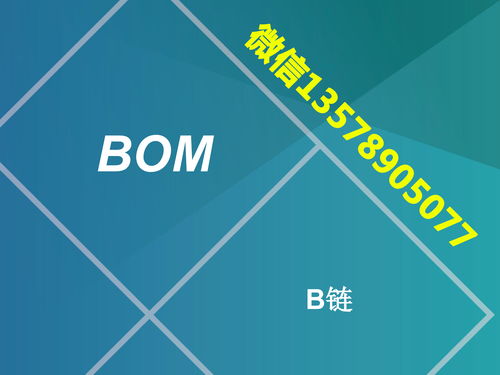
Understanding BOM and Its Omnipresent Role in Manufacturing
Have you ever wondered what goes into making a product? From the simplest of items to the most complex machines, the answer lies in a document known as the Bill of Materials (BOM). In this article, we delve into the intricacies of BOM, exploring its significance, types, and applications across various industries.
What is BOM?

The BOM, in its simplest form, is a list of all the materials, components, and sub-assemblies required to manufacture a product. It serves as a blueprint for production, ensuring that every element is accounted for and used efficiently. Think of it as a recipe for a dish, where each ingredient plays a crucial role in the final outcome.
Let’s take the example of a car. The BOM for a car would include items like the engine, chassis, body, tires, and numerous other parts. Each of these components has a specific quantity and function, making the BOM a comprehensive guide for manufacturers.
Types of BOM

BOMs come in various forms, each serving a specific purpose in the manufacturing process. Here are some common types:
| Type of BOM | Description |
|---|---|
| Engineering BOM (EBOM) | Used for product design and process planning, providing a detailed description of the product’s structure and manufacturing requirements. |
| Planning BOM (PBOM) | Used for production planning and material requirements planning, considering production capacity and manufacturing constraints. |
| Manufacturing BOM (MBOM) | Guides production activities on the shop floor, containing all information related to manufacturing, such as process routes and work centers. |
| Cost BOM (CBOM) | Used for cost accounting and control, recording all cost elements involved in the product’s manufacturing process. |
Each type of BOM serves a unique purpose, ensuring that every aspect of the manufacturing process is well-coordinated and optimized.
Applications of BOM

BOMs are not just limited to manufacturing; they have a wide range of applications across various industries. Here are some key areas where BOMs play a crucial role:
1. Production Planning and Scheduling: BOMs provide a clear picture of the materials and components required for production, enabling manufacturers to plan and schedule their production activities efficiently.
2. Inventory Management: By analyzing BOMs, manufacturers can optimize their inventory levels, reducing waste and improving inventory turnover.
3. Cost Accounting and Control: BOMs provide detailed information about the cost elements involved in the manufacturing process, enabling manufacturers to control costs and improve profitability.
4. Quality Management: BOMs help in identifying the critical components and materials, ensuring that quality standards are met throughout the production process.
5. Sales and Marketing: BOMs provide valuable information to sales and marketing teams, enabling them to understand the product’s structure and specifications, and effectively communicate its features to customers.
Conclusion
BOMs are an essential component of the manufacturing process, providing a comprehensive guide for production, inventory management, cost accounting, and quality control. By understanding the significance of BOMs and their various applications, manufacturers can optimize their operations and achieve greater success.





